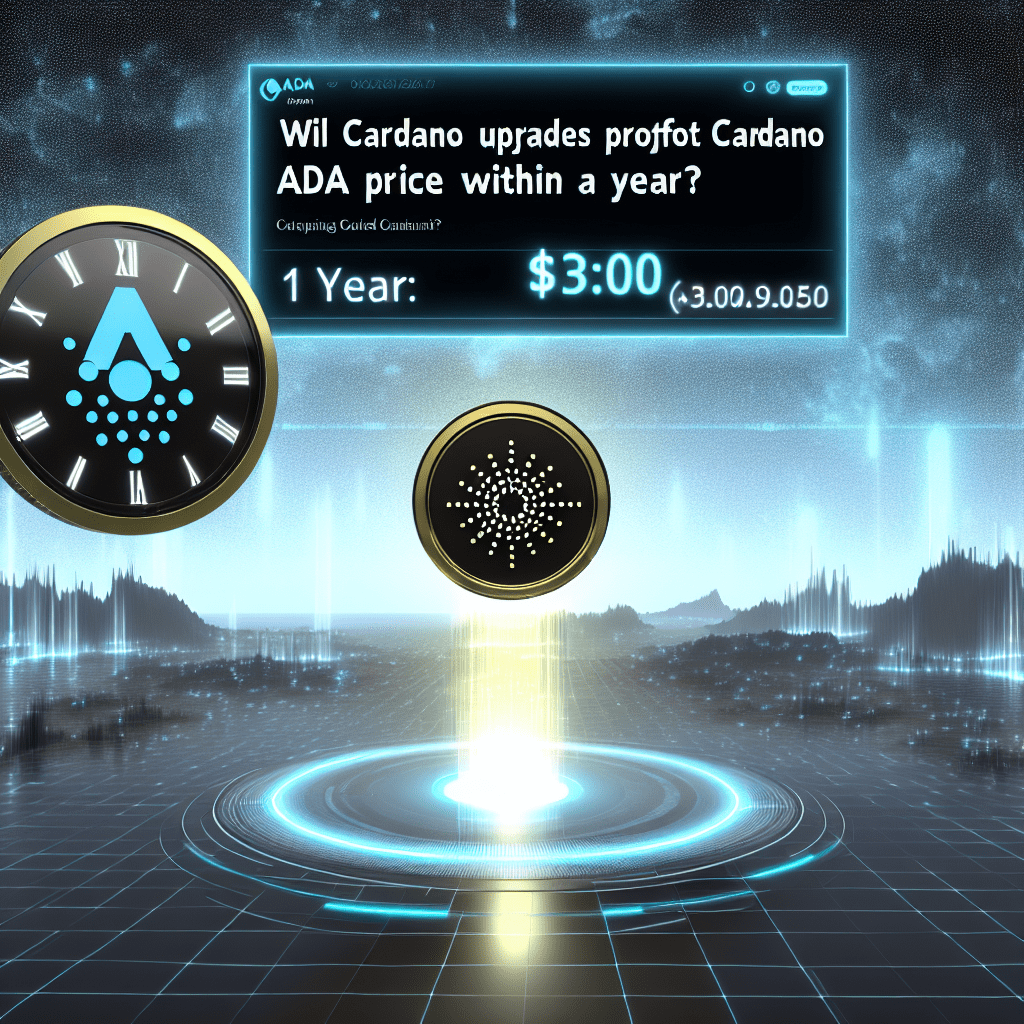The upcoming enhancements in Cardano could determine if its native token ADA breaks through a long-standing ceiling. With initiatives like Project Acropolis, the adoption of Hydra, and the introduction of Ouroboros Leios in sight, the key question is whether these milestones can alter Cardano’s market narrative and propel ADA toward $3 by 2027.
This analysis, generated through AI utilizing sequence prompting, learning, and advanced reasoning, should not be interpreted as financial advice. It’s important for readers to conduct their own research and seek professional guidance when making investment decisions.
Crucially, this predictive analysis does not take into account further developments such as institutional adoption, ETF approvals, or regulatory decisions. It focuses solely on Cardano network upgrades and their potential impact on ADA.
Timeline of Cardano Network Upgrades and Their Potential Effects
| Upgrade | Timing | Technical Focus | Impact on Price | Projected ADA Price Range* |
| Project Acropolis | Q4 2025 – Q1 2026 | Modular node re-architecture | Enhances stability and implementation pace; minimizes execution risks | $0.70 – $0.95 |
| Hydra Adoption | 2026 (ongoing) | L2 heads for low-latency settlement | Offers faster, cost-effective user experience if apps integrate | $0.90 – $1.40 |
| Ouroboros Leios | Mid–late 2026 (testnet first) | Parallelism at base layer | Reassesses capacity and long-term utility if metrics are maintained | $1.30 – $2.20 |
| Post-Leios Path to Mega | 2027+ | Advanced scaling roadmap | Compounds if delivery remains consistent | $2.00 – $3.50 |
*Ranges indicate tech-to-adoption trajectories, not market timing predictions.
Sponsored
Sponsored
Translation of Cardano Upgrades to ADA Price
Market trends reward credible execution and user impact via three channels:
- Throughput and UX → activity and TVL narrative: Efficient, affordable, and smooth applications draw users and increase volume.
- Developer velocity → reduced time-to-feature: Streamlined code and reliable tools expedite delivery, thus lowering the “execution discount.”
- Transparency and governance rigor: Clear benchmarks and reporting diminish perceived risk.
Price movements occur when these channels exhibit verifiable evidence, not mere promises.
Project Acropolis: Enhancing Credibility and Speed
Potential to elevate ADA price to $0.90–$0.95
Acropolis modularizes the node, resulting in less operational friction. This simplifies maintenance and accelerates the delivery of future features. Stake pool operators can expect reduced resource load and minimized issues. The frequency of releases is likely to improve.
Market perception may reflect this as a lower execution risk premium. If monthly releases are executed smoothly, confidence will increase, supporting a price re-rating into the $0.90 range.
However, downside risk remains at $0.70
If Acropolis faces delays or requires numerous hotfixes, the execution discount may resurface. Challenges with SPO satisfaction or reliability issues could dampen sentiment, driving the price toward $0.70 until stability is established.
Key Indicators to Monitor
Sponsored
Sponsored
- Consistent minor releases over several months.
- Positive feedback from SPOs regarding performance and uptime.
- Increased merged PRs and diversified contributors.
Hydra: Value Driven by Adoption, Not Just Updates
Prospects for moving ADA towards $1.20–$1.40
Hydra’s significance hinges on top dApps integrating it and providing metrics before and after implementation. Users must observe substantial improvements in latency and costs to bolster activity and Cardano’s competitive UX narrative.
Prominent integrations create a competitive advantage. A single flagship success may push ADA beyond $1.20, while multiple successful applications with transparent metrics could sustain values of $1.30–$1.40.
Otherwise, it could stagnate under $1.If Hydra remains a niche tool or if integration proves challenging, users may see no tangible improvements. Hence, market interest may wane and keep ADA within a limited range.
Key Indicators to Monitor
- Working Hydra heads facilitating regular settlements.
- Public success stories from leading dApps.
- Wallet and SDK functionalities that simplify Hydra’s integration.
Sponsored
Sponsored
Ouroboros Leios: Catalyst for Base-Layer Scaling
Potential to lift ADA towards $1.30–$2.20
Leios introduces parallelism by separating proposal and validation processes. Strong, consistent testnet metrics indicate a viable route to increased base-layer capacity. This broadens the applicable app range and mitigates future congestion risks.
Markets tend to reward enhanced capacity alongside decentralization. A stable Leios testnet could reshape perceptions of Cardano’s throughput capabilities. ADA might be poised for a re-rating towards $2 if this evidence persists.
Conversely, it might stagnate near $1.20. Should metrics fluctuate or implementation lag, the scaling narrative may weaken, leading capital to shift towards faster-developing ecosystems.
Key Indicators to Monitor
- Clear testnet milestones along with documented performance findings.
- Compatibility guidance facilitating dApp transitions.
- Operator insights on security and reliability.
Post-Leios Outlook: Targeting $3+
Sponsored
Sponsored
Potential to elevate ADA price to $2.00–$3.50 by 2027
Achieving prices above $3 necessitates a compounding effect:
- Acropolis delivers quicker feature rollouts with fewer incidents.
- Hydra drives several high-profile applications with public victories.
- Leios progresses from testnet to managed mainnet deployment without regressions.
- Updates facilitate advanced features without user visibility.
This synergy diminishes risks, boosts activity levels, and draws in developers. Markets then position a lasting execution premium, yielding a price range of $2–$3.50.
However, setbacks like security breaches, unattended milestones, or weak app adoption could compress potential gains. If the narrative falters, ADA may trade at a beta level instead of enjoying a premium.
Critical Perspective
Each upgrade builds on its predecessor. Acropolis enhances shipping speeds, Hydra necessitates broad adoption, and Leios provides the scaling framework. Mega remains an ambitious target.
For ADA to surpass the $3 mark, Cardano must translate in-depth research into observable user benefits. Investors should keep an eye out for evidence in active dApps, validator feedback, and transparent analytics.
Ultimately, execution, rather than mere promises, will dictate whether Cardano regains a premium status in the Layer-1 market.


